 Apr 9 2021
Apr 9 2021‘War in the woods’: activists blockade Vancouver Island in bid to save ancient trees
The Guardian
April 8, 2021
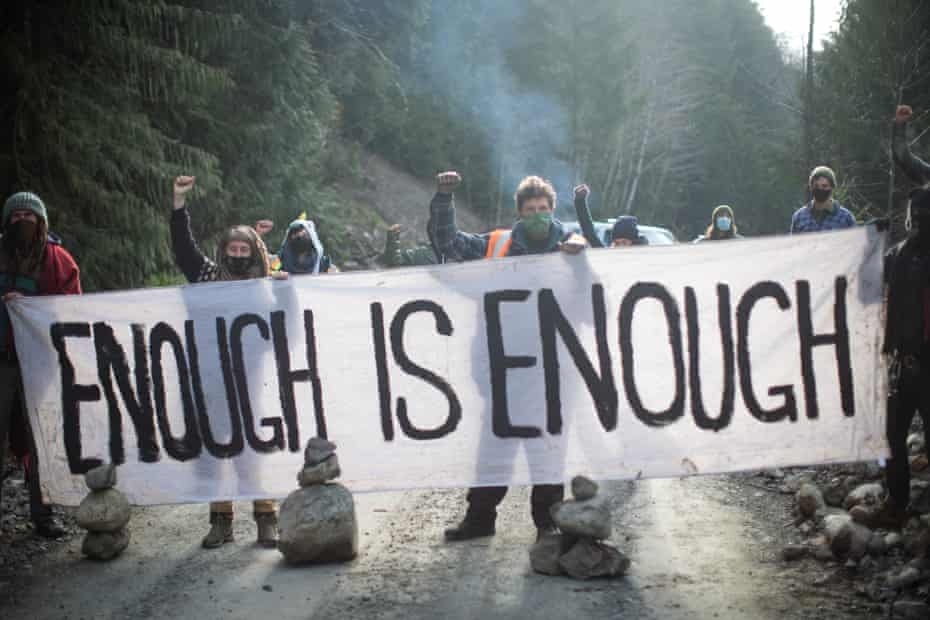
Loggers say blockades threaten their livelihoods as activists build fortifications and vow to remain
Hundreds of activists are digging in at logging road blockades across a swath of southern Vancouver Island, vowing to stay as long as it takes to pressure the provincial government to immediately halt cutting of what they say is the last 3% of giant old growth trees left in the province.
The situation echoes the 1993 “war in the woods” in nearby Clayoquot Sound, which saw nearly 1,000 people arrested at similar logging blockades in the largest act of civil disobedience in Canadian history.
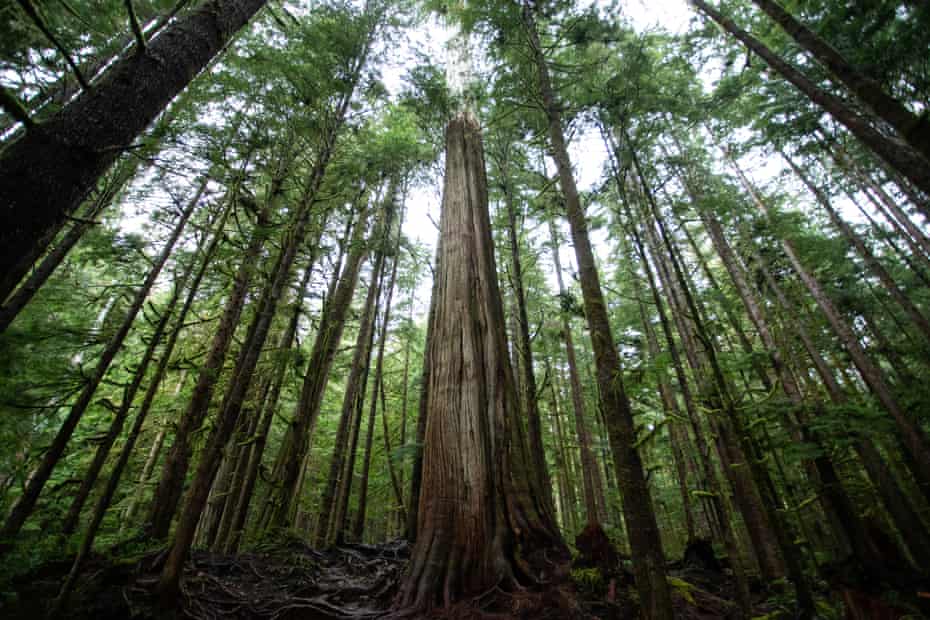
Tensions are rising. Just this weekend, the activists stopped a team of old growth tree cutters – called fallers – from entering a logging area in the Caycuse watershed.
“You know this is illegal?” said Trevor Simpson, a logger, who told the Guardian he’s been a faller contractor for 29 years and relies on cutting old-growth trees. “This is my livelihood at stake.
A blockader named Owen, one of about two dozen on the scene, told the loggers through the window of their pickup truck: “The fact is, if we want our planet to be sustainable, we have to protect these ecosystems.”

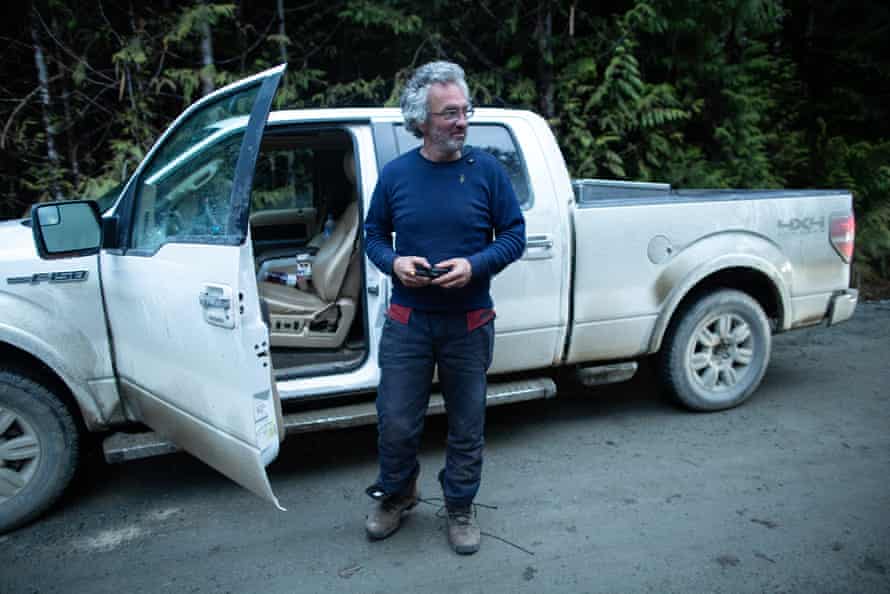
Another logger said: “We have to work. Are they [the blockaders] going to pay our wages today? If we don’t work, we don’t get paid.”
The blockaders refused to let Simpson’s team pass, and eventually the frustrated crew left. They returned on Tuesday to hand-deliver a court injunction ordering the blockades taken down and setting the stage for arrests. Similar scenes are playing out at strategic blockades across the area.
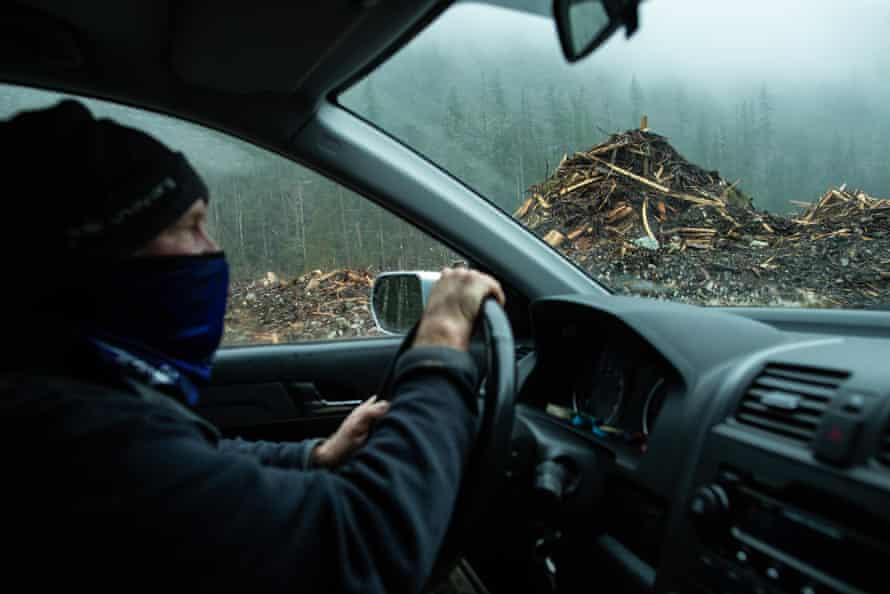
After the loggers left the Caycuse blockade, activists went to work building fortifications, a giant kitchen tent, and even an outhouse made entirely of discarded old-growth cedar.
The movement started more than eight months ago, when an impromptu blockade of 12 people sprang up to stop road building into the headwaters of the Fairy Creek watershed, one of the last untouched watersheds in the region.
But what started as a campaign to stop logging in a single watershed has grown thanks to widespread frustration with the British Columbia government’s broader approach to old-growth logging.
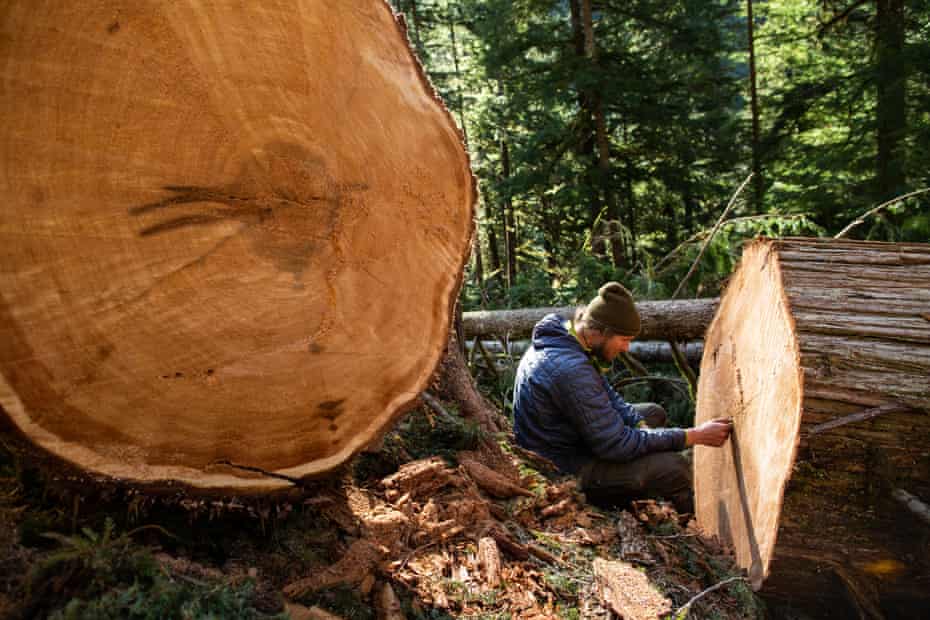
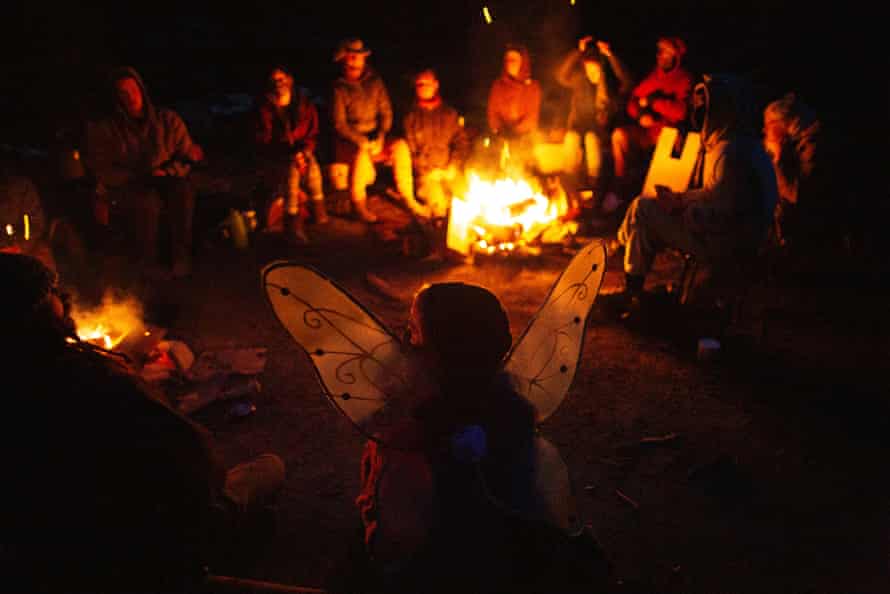
Activists and forestry experts say a tiny fraction of the province’s giant old-growth trees are left standing, and an immediate moratorium on cutting them is needed. Meanwhile, forestry companies and the government say the cut must continue in order to protect jobs in an industry that has experienced steep job losses and mill closures in recent years.
The logging company Teal Jones Group says its plans for cutting in Fairy Creek have been mischaracterized, and the trees it wants to cut are critical for supporting hundreds of jobs.
“Most of Fairy Creek is a protected forest reserve or unstable terrain and not available for harvesting,” said Gerrie Kotze, the company’s vice-president.
Kotze said Teal Jones’ planned cut was a small area at the head of the watershed. The company would harvest the trees with care “and mill every log we cut right here in BC,” he said.
The government is caught between its election promises to protect old-growth forests and what it says is an undue risk to jobs in the forestry industry.
“We want to make sure people can appreciate old-growth trees for years to come, while supporting a sustainable forest sector for workers and communities,” said the forestry minister, Katrine Conroy, in a statement.
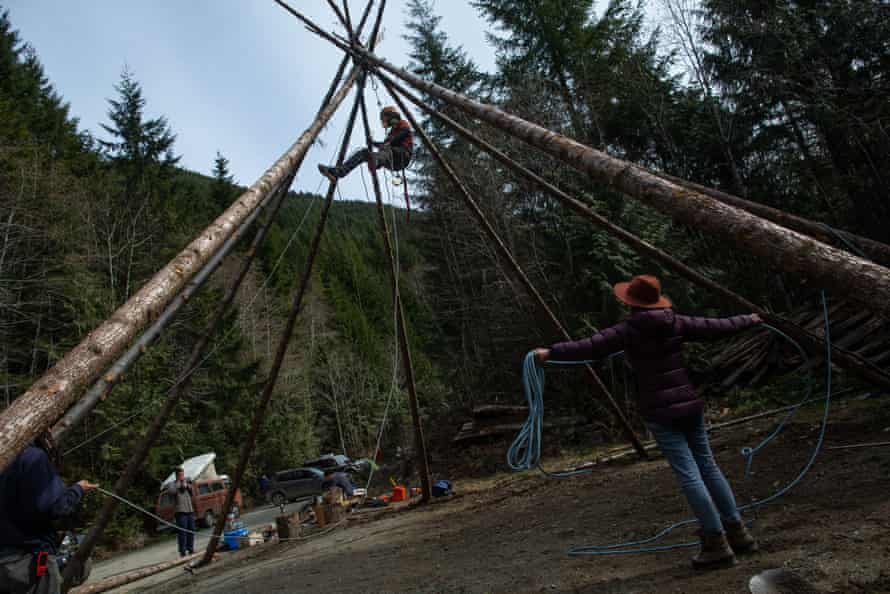

In September, the government released a long-awaited old growth strategic review. Citing the “high risk to loss of biodiversity” and “widespread lack of confidence in the system of managing forests”, the report’s authors made 14 recommendations, including immediately deferring all old-growth logging in at-risk ecosystems, all of which were accepted by government.
But critics say after more than six months, the government is not moving fast enough while chainsaws continue to snarl and ancient trees continue to fall.
Rachel Holt, an independent ecologist, argues that the government is drastically overstating how much giant old growth still exists. The latest government reports say just over 13m hectares of total primary forest considered very old, or ancient, is still standing. Holt and her colleagues agree.
“But the vast majority of that – about 80% – consists of small or very small trees,” Holt said.
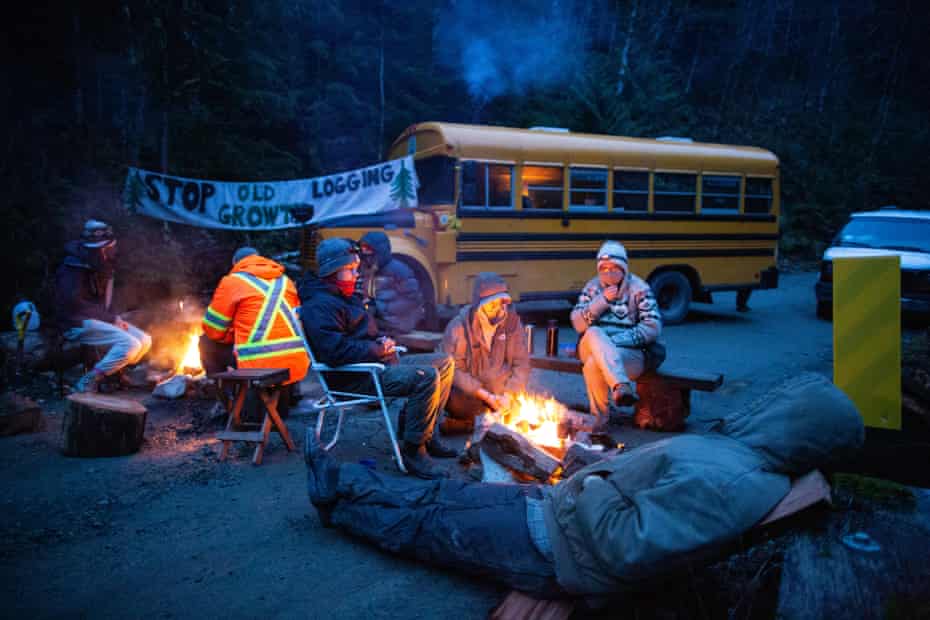
Giant, ancient trees are the bones of coastal temperate rainforests. Whole ecosystems can reside within their vast, moss-covered branches. To think of them as just pretty things to look at missed the point, Holt said.
The new blockades are international. On his computer in Washington state, 17-year-old Joshua Wright has followed the developments closely. Despite working remotely, the young film-maker is a key organizer with the movement, which calls itself the Rainforest Flying Squad.
Wright, who grew up on Vancouver Island, said it took moving to the US to realize how rare British Columbia’s remaining old growth is.
“If we don’t stop logging now, in three to five years there’s not going to be any old growth left,” said Wright.
Read the original article





